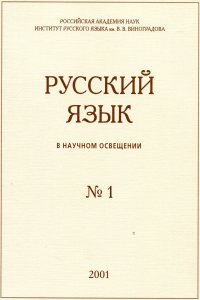The dialect of the villages Shetnevo, Makeevo, Sh’elkino, Terekhovo and Stepan’kovo of the Zapadnodvinskij district, Tver oblast’. A grammar sketch and field notes
Abstract:
The paper focuses on the Pskov dialect of five neighboring villages in the Zapadnodvinsky
district of the Tver oblast’. The dialect belongs to the group of Pskov dialects,
which is adjacent to the Smolensk dialects belonging to the South Russian dialect. In this
paper, which is the first part of a grammar sketch of the dialect, we describe some of its
morphological and syntactic features. Morphological analysis covers the noun inflection
for case, personal, indicative, and interrogative-relative pronouns, the verbal paradigm of
the present tense, reflexive suffixes of the verb, morphology of participles. Syntactical
analysis describes the agreement of participles, the nominative object, constructions with
prepositions, constructions with pluperfect and some means of expressing the external
possessor.


